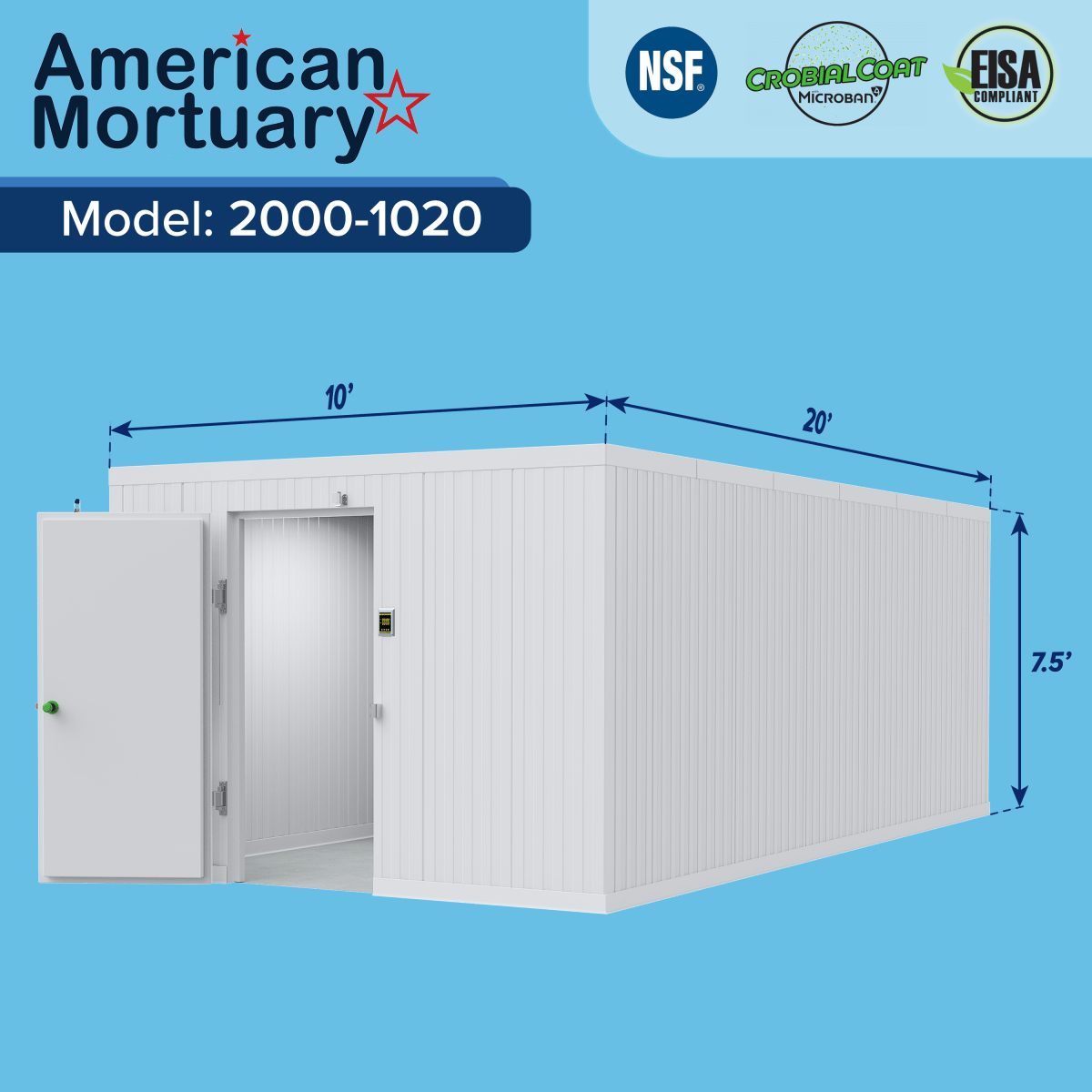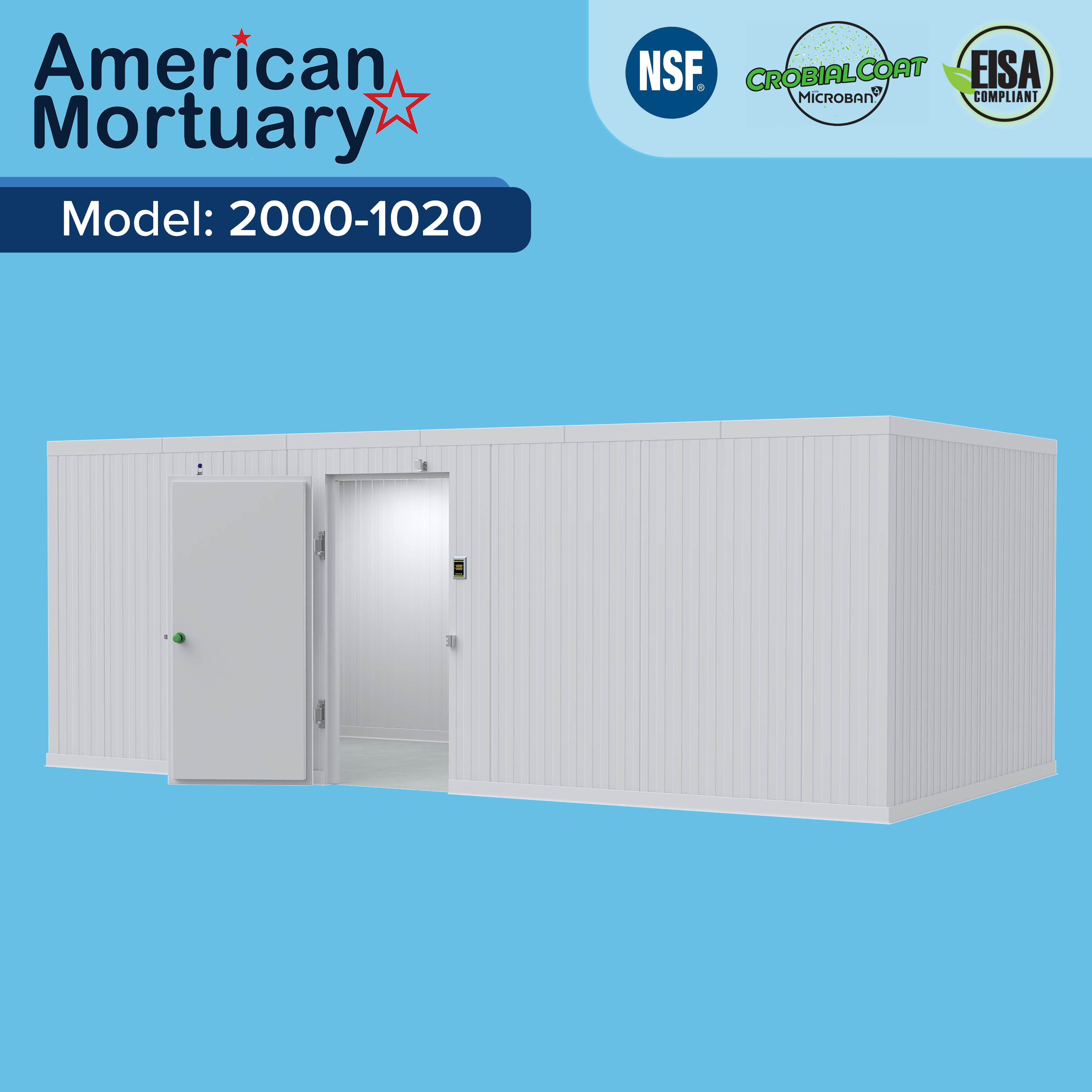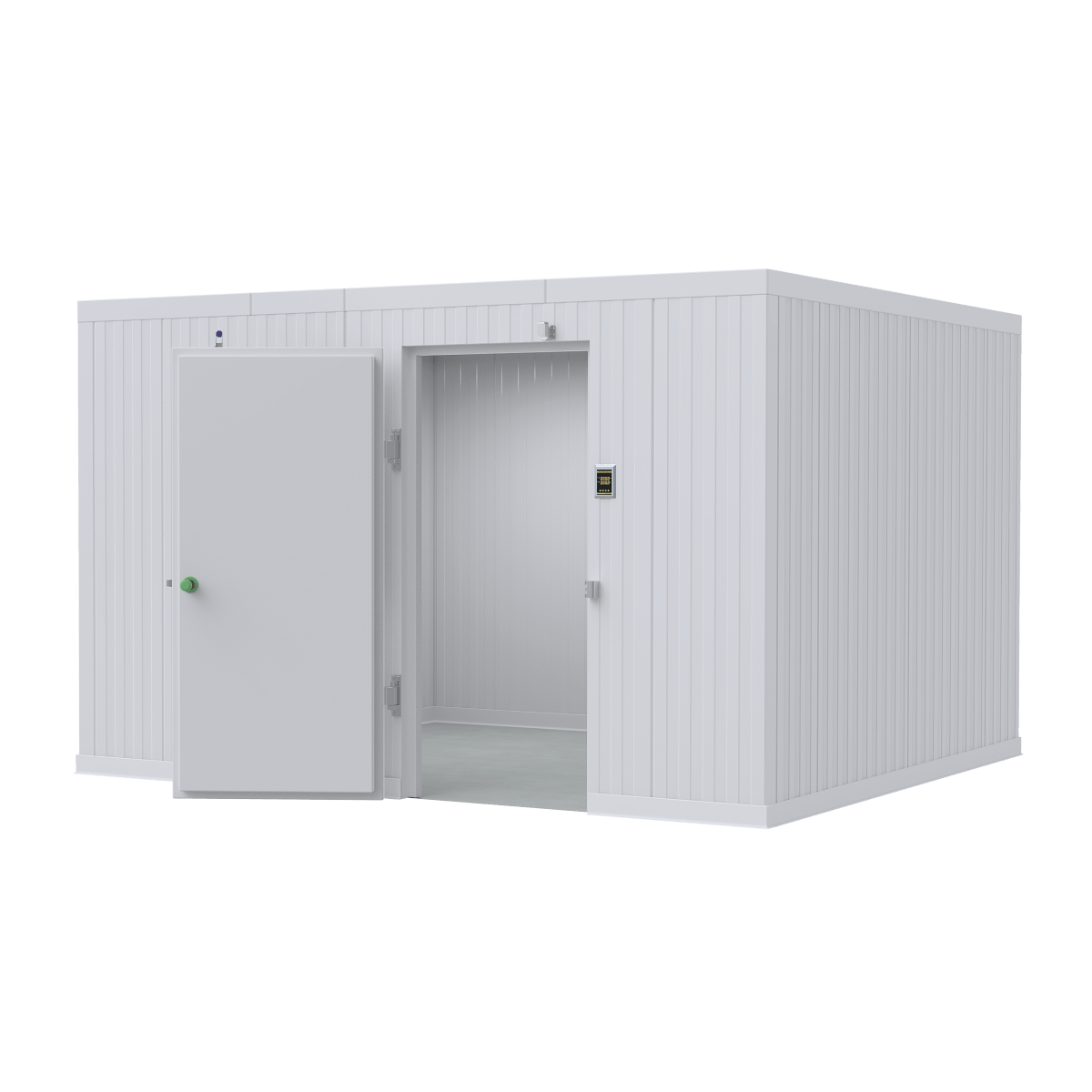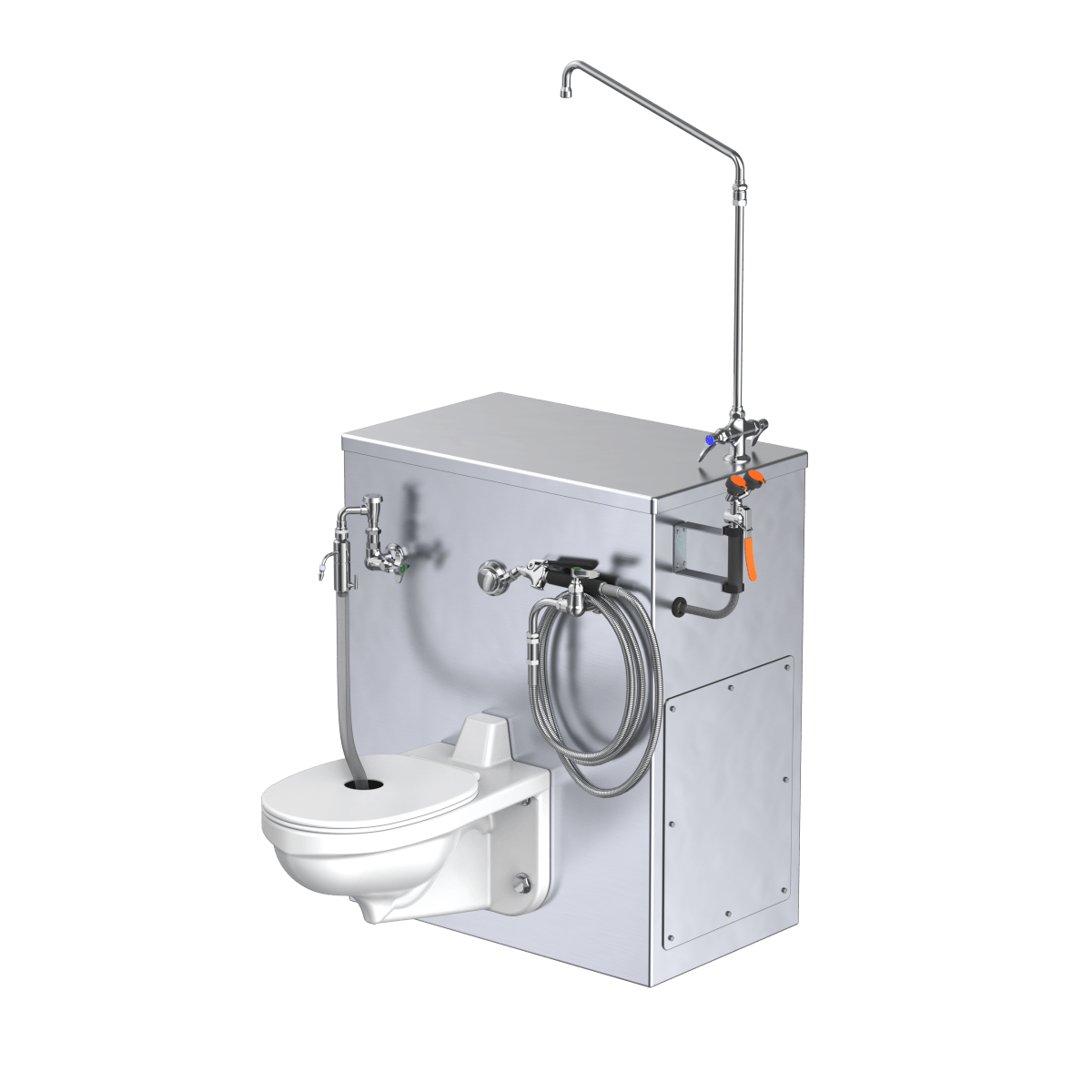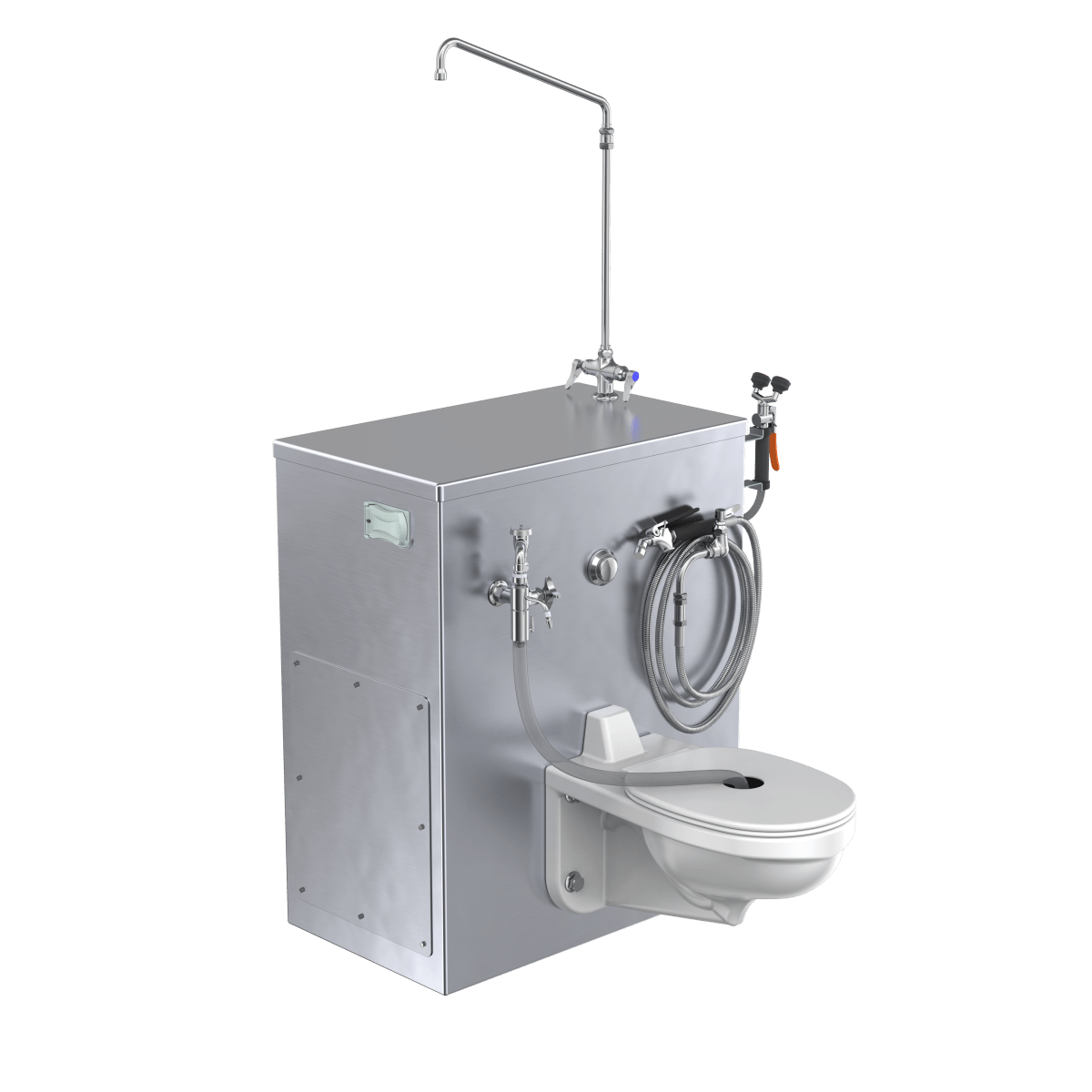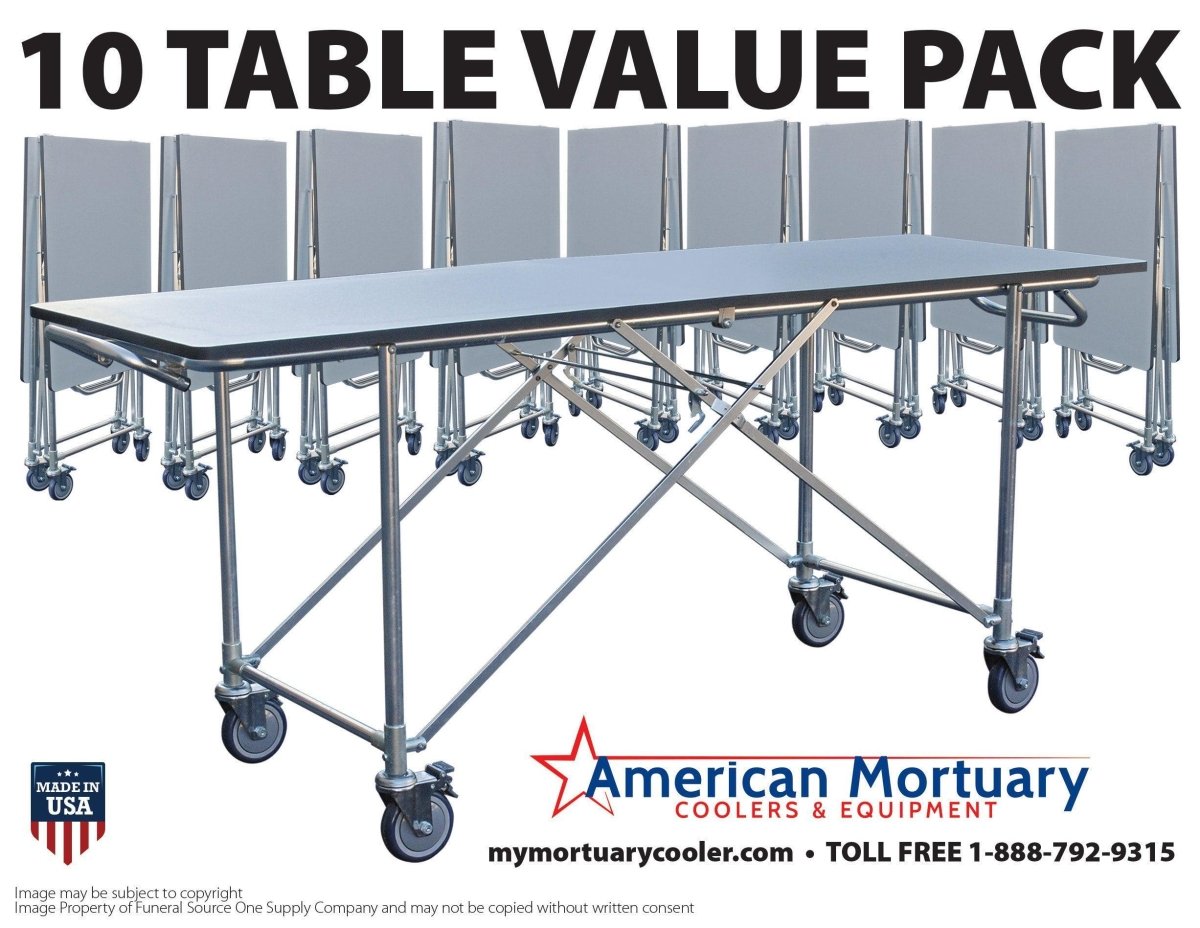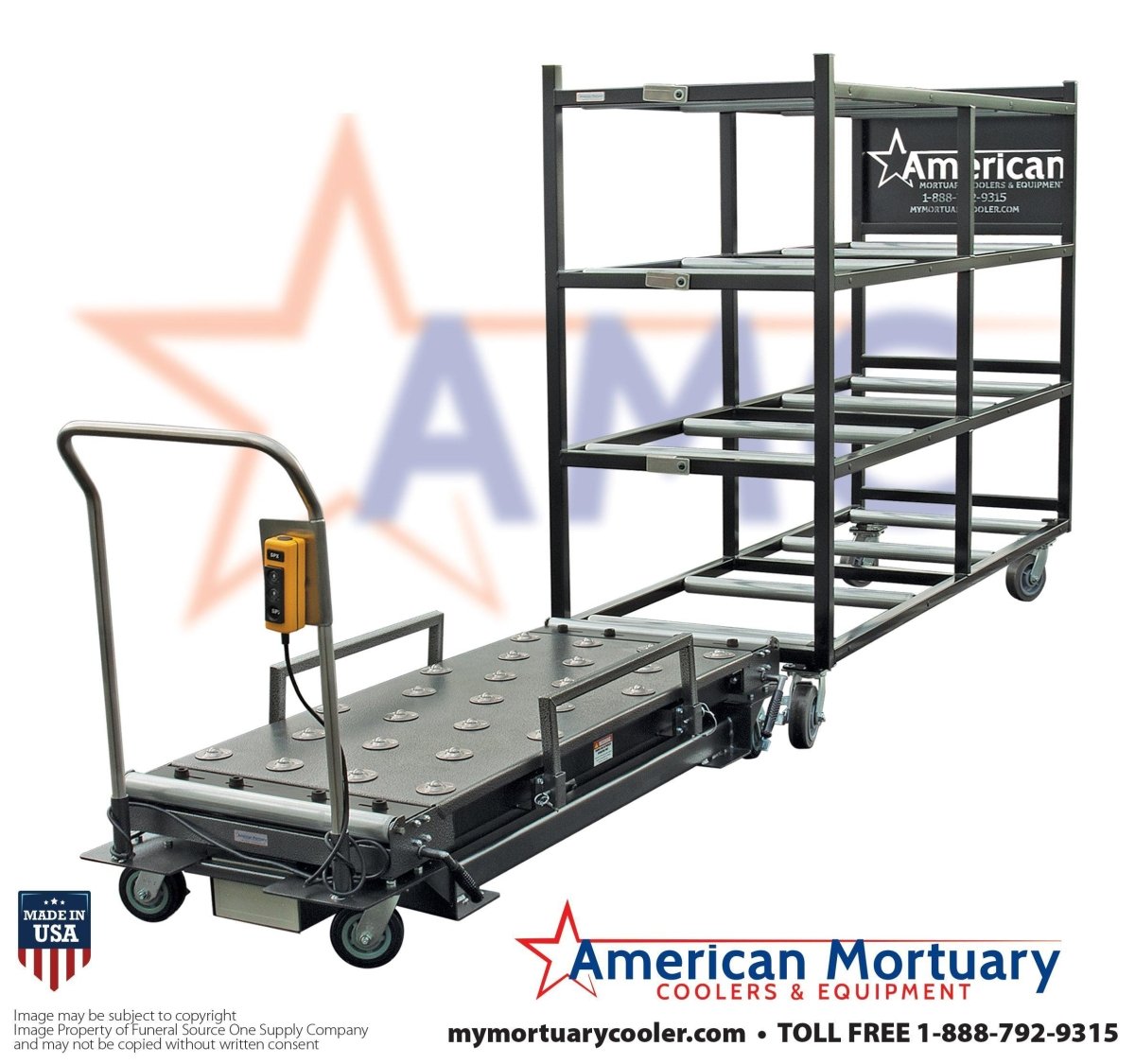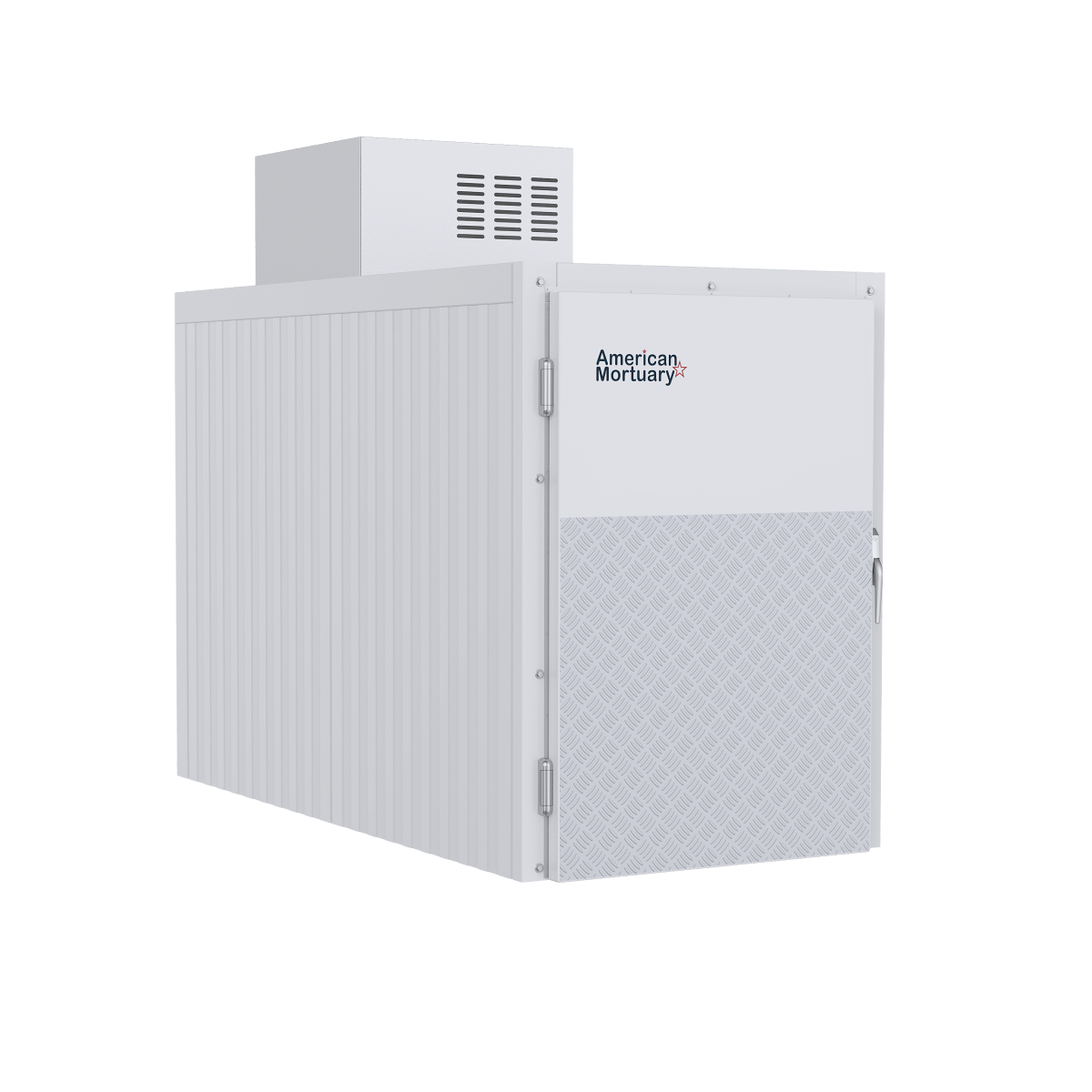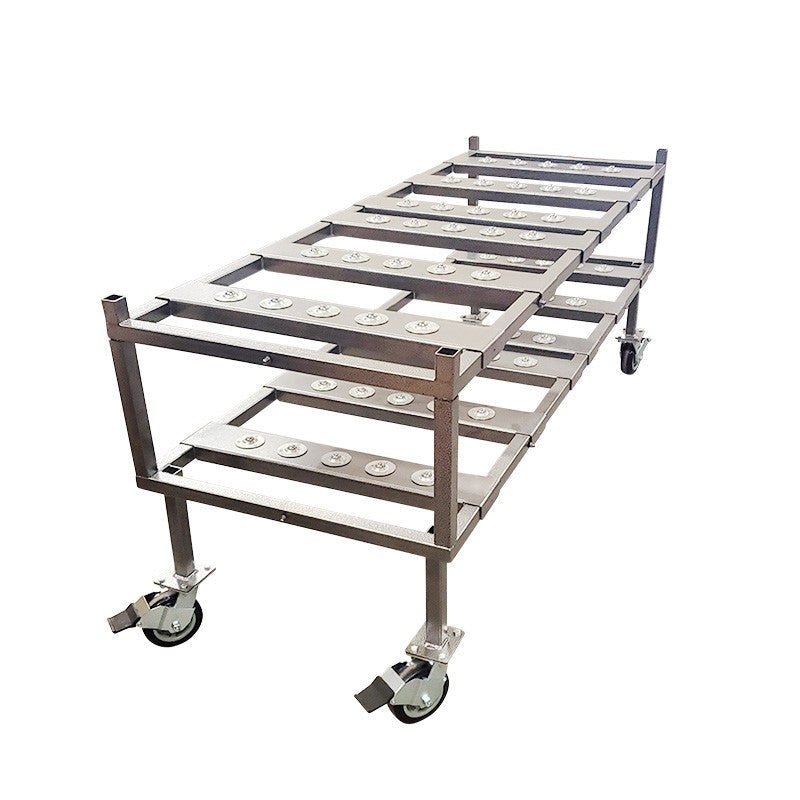The embalming room represents the technical heart of funeral home operations. It's where skilled professionals restore appearance, preserve remains, and prepare loved ones for family viewing and services. Yet despite the critical importance of this space, many funeral homes operate with outdated, mismatched, or inadequately selected embalming room equipment that compromises work quality, creates operational inefficiency, and undermines the professional standards families expect.
Professional embalming room equipment encompasses far more than a simple work table. Complete embalming room solutions integrate specialized equipment addressing the unique requirements of professional mortuary preparation: proper work surfaces enabling precise restoration work, integrated drainage and sanitation systems, efficient storage and supply organization, specialized equipment supporting diverse embalming techniques, professional lighting enabling detailed color matching, climate control supporting optimal working conditions, and seamless integration with refrigeration and body storage systems.
Yet many funeral home operators and embalming professionals don't fully understand how complete embalming room equipment systems can transform their preparation capabilities. Some inherited aging equipment from decades past, never considering modernization. Others selected individual pieces independently, creating mismatched systems that don't integrate efficiently. Still others operate without understanding how proper equipment selection impacts work quality, efficiency, staff satisfaction, and ultimately facility reputation.
This comprehensive guide addresses every aspect of embalming room equipment: what distinguishes professional systems designed specifically for mortuary preparation, the different types of equipment serving various preparation needs, critical specifications ensuring optimal functionality, how to evaluate and select complete equipment solutions, proper installation and integration, regulatory compliance requirements, and why investing in professional embalming room equipment delivers substantial benefits to work quality, efficiency, and professional reputation.
Understanding Embalming Room Equipment: Professional Preparation Infrastructure
Embalming room equipment represents specialized infrastructure designed exclusively for professional mortuary preparation work. Unlike generic medical or laboratory equipment, professional embalming room solutions address the unique requirements of funeral service restoration and preparation.
The engineering requirements for embalming room equipment differ fundamentally from other applications. Medical preparation rooms focus on clinical examination; embalming rooms must emphasize aesthetic restoration and dignity. Laboratory workspaces prioritize chemical handling; embalming rooms must combine chemical work with careful, respectful body positioning. Generic commercial kitchens provide basic work surfaces; embalming rooms must support intricate, detailed restoration work requiring precise positioning and visibility.
Professional embalming room equipment systems address unique challenges that only mortuary specialists understand. Embalmers work extended periods in focused positions, requiring ergonomic surfaces preventing strain and fatigue. Embalming involves specialized fluids, tools, and techniques requiring organized, accessible supply systems. Bodies vary in size and condition, requiring flexible positioning and support. Work must maintain professional appearance and dignity while enabling efficient access for restoration. Integration with refrigeration, storage, and service areas requires careful facility design.
For funeral directors and embalming professionals, the right embalming room equipment means:
- Superior restoration work quality enabling exceptional results families recognize
- Efficient operations reducing preparation time while maintaining quality
- Professional appearance impressing families during facility tours
- Staff comfort and safety supporting long-term retention
- Regulatory compliance with licensing and health department standards
- Seamless integration with complete facility operations
- Peace of mind knowing equipment supports professional standards
Components of Professional Embalming Room Equipment Systems
Complete embalming room equipment encompasses multiple specialized components working together to support professional preparation work.
Embalming Tables and Work Surfaces: The foundation of embalming room equipment, professional embalming tables provide height-adjustable work surfaces enabling comfortable, precise restoration work. Quality tables feature smooth, non-porous surfaces, integrated drainage, and positioning mechanisms supporting various body types and preparation techniques.
Drainage Systems and Sanitation Equipment: Specialized drainage systems handle biological materials with proper antimicrobial treatment. Complete systems include adequate drain capacity, proper sloping, and integration with facility plumbing supporting efficient drainage and thorough sanitation.
Lighting Systems and Task Lighting: Professional embalming rooms feature comprehensive lighting: overhead lighting providing general illumination, task lighting enabling detailed restoration work, and color-accurate lighting supporting precise color matching. Quality lighting is absolutely essential for professional results.
Supply Storage and Organization: Embalming work requires numerous fluids, tools, and supplies. Professional systems include organized storage: cabinetry for fluid storage, tool organization, supply accessibility, and inventory management supporting efficient workflow.
Specialized Equipment and Tools: Embalming work employs specialized equipment: injection machines, aspiration equipment, positioning aids, and various tools. Professional rooms organize this equipment for ready access and efficient operation.
Temperature and Climate Control: Comfortable working conditions are essential for precision work. Professional embalming rooms maintain appropriate temperature, humidity, and ventilation supporting staff comfort and optimal working conditions.
Refrigeration Integration: Professional embalming rooms integrate seamlessly with refrigerated body storage, enabling efficient body transitions and temporary storage during preparation if needed.
Plumbing and Water Systems: Clean water access and integrated drainage support sanitation and operational needs. Professional systems include hot water availability for cleaning and sanitation.
Safety and Compliance Equipment: Professional embalming rooms include safety features: proper ventilation, electrical safety, emergency equipment, and design supporting OSHA compliance.
Professional Finishing Equipment: Some embalming rooms include specialized finishing equipment supporting final appearance preparation: hair dressing equipment, makeup application areas, and grooming supplies.
Types of Embalming Room Equipment Configurations
Different funeral homes and embalming styles require different equipment configurations.
Traditional Embalming Rooms: Full-service funeral homes typically feature dedicated embalming rooms with permanent equipment: fixed or adjustable embalming tables, integrated drainage, permanent lighting, and organized storage systems. Traditional rooms support full-service embalming capabilities.
Compact Embalming Stations: Smaller funeral homes with limited space benefit from compact embalming equipment configurations providing professional capability in space-efficient designs without sacrificing functionality.
Integrated Preparation Areas: Modern funeral homes increasingly combine embalming preparation with other functions: integrated storage, preparation tables, supply systems, and refrigeration creating efficient, multi-functional spaces.
Mobile Embalming Equipment: Facilities requiring temporary embalming capability (disaster response, temporary facilities) can deploy portable equipment including mobile tables, portable drainage systems, and portable supply organization.
High-Capacity Embalming Facilities: Large funeral homes serving multiple embalmers may employ multiple complete embalming stations enabling simultaneous preparation of several bodies.
Specialized Embalming Rooms: Some facilities emphasize specific techniques: restorative art rooms with extensive lighting and positioning capability, arterial embalming stations with specialized equipment, or cavity preparation areas with specialized drainage.
Critical Specifications: Professional Embalming Room Equipment Standards
Selecting appropriate embalming room equipment requires understanding specifications ensuring professional capability.
Embalming Table Quality and Specifications: Professional tables feature precise height adjustment (typically 24-36 inches), smooth non-porous work surfaces (stainless steel or medical-grade finishes), integrated drainage, and sturdy construction preventing flexing or instability. Weight capacity should safely support 300-500+ pounds.
Lighting Quality and Color Accuracy: Professional embalming rooms require minimum 500+ lux overhead lighting, 800+ lux task lighting, and color-accurate lighting (5000K+) enabling precise color matching. Inadequate lighting compromises restoration quality.
Drainage System Adequacy: Proper drainage with adequate capacity, antimicrobial treatment, and integration with facility plumbing supports efficient sanitation and prevents odor/bacterial problems.
Storage and Organization: Adequate storage for fluids, tools, supplies, and personal protective equipment prevents clutter and enables efficient workflow. Organized systems improve both efficiency and professionalism.
Temperature Control: Comfortable working temperatures (65-72°F) support concentration and quality work. Climate control should enable adjustment for personal comfort.
Ventilation and Air Quality: Professional ventilation prevents odor accumulation and ensures proper air quality for extended work periods. Ventilation should be adequate but not create uncomfortable drafts.
Water and Sanitation Systems: Hot water access, adequate drain capacity, and organized sanitation supplies support cleaning and between-body sanitation.
Electrical Systems and Safety: Adequate electrical service with proper grounding, emergency shutoff capability, and safety features supports equipment operation and staff safety.
Regulatory Compliance: Equipment selection and room design must meet OSHA standards, health department requirements, funeral service licensing standards, and local building codes.
Design Considerations: How Embalming Room Equipment Integrates with Facility Operations
Professional embalming room equipment doesn't function in isolation—it must integrate seamlessly with complete funeral home operations.
Proximity to Body Storage: Embalming rooms should position conveniently to refrigerated storage, minimizing transport distance and enabling efficient body transition. Proximity reduces time and effort in body positioning.
Workflow Optimization: Equipment positioning should support logical workflow: body retrieval → embalming table positioning → preparation work → transfer to casket staging. Workflow optimization improves efficiency.
Preparation to Service Area Integration: After embalming, bodies transition to casket staging and viewing. Equipment positioning should facilitate smooth transitions without awkward repositioning.
Supply and Equipment Accessibility: Frequently used supplies should be readily accessible. Organization supporting easy access improves efficiency and reduces preparation time.
Professional Appearance: Embalming rooms visible to families or staff should project professionalism and respect. Clean, organized, modern equipment conveys competence.
Staff Comfort and Morale: Proper working conditions—comfortable temperatures, adequate lighting, ergonomic surfaces—improve staff satisfaction and retention.
Sanitation Support: Equipment design should facilitate thorough cleaning and sanitation between bodies. Accessible drainage, smooth surfaces, and organized systems support professional sanitation.
Future Expansion: Room layout should enable equipment upgrades or expansion as facility needs evolve.
Installation and Setup of Professional Embalming Room Equipment
Proper installation ensures professional embalming room equipment performs optimally.
Site Assessment and Planning: Professional installation begins with comprehensive assessment: space dimensions, electrical service adequacy, plumbing accessibility, drainage requirements, lighting assessment, climate control needs, and workflow analysis.
Equipment Selection and Ordering: Based on assessment, appropriate equipment is selected: properly sized and specified embalming tables, adequate lighting systems, drainage system design, storage solutions, and supporting equipment.
Professional Installation: Experienced technicians handle installation: proper electrical integration, plumbing connection and slope verification, equipment positioning optimizing workflow, lighting installation, climate control setup, and safety verification.
System Testing and Verification: After installation, all systems should be tested: embalming table function under load, drainage testing, lighting adequacy verification, climate control function, electrical safety inspection, and water system function.
Staff Training: Comprehensive training ensures staff understand proper equipment use, maintenance requirements, safety procedures, and cleaning/sanitation protocols. Well-trained staff maximize equipment effectiveness.
Documentation: Professional installation includes detailed documentation: equipment specifications, maintenance procedures, drainage design, electrical layout, emergency protocols, and warranty information.
Compliance and Regulatory Standards for Embalming Room Equipment
Embalming room equipment must comply with regulatory requirements at multiple levels.
OSHA Workplace Safety Standards: Equipment and room design must comply with OSHA requirements for worker safety: proper ventilation, electrical safety, ergonomic work surfaces, and safe working practices.
State Funeral Service Licensing: Most states establish specific standards for embalming facilities. Professional equipment must meet these standards. Requirements vary by state.
Health Department Standards: State and local health departments establish sanitation and drainage requirements. Equipment must support proper procedures and facilities.
Building and Electrical Codes: Installation must comply with local building codes covering electrical service, structural support, drainage, and ventilation.
Bloodborne Pathogen Standards: OSHA Bloodborne Pathogen Standard applies to embalming facilities. Equipment and practices must support universal precautions and safe handling.
Common Problems with Embalming Room Equipment and Solutions
Understanding common issues helps facilities select appropriate equipment and address problems effectively.
Inadequate Lighting: Insufficient lighting compromises restoration quality. Solutions include additional task lighting installation, replacement of inadequate lighting, or supplemental portable lighting.
Poor Drainage: Slow or inadequate drainage creates odor and sanitation problems. Solutions include drain cleaning, plumbing modifications, or table drainage improvement.
Uncomfortable Table Height: Fixed-height tables that don't match staff height or work requirements create back strain. Solutions include adjustable tables, supplemental positioning aids, or work surface modifications.
Inadequate Storage: Disorganized supplies waste time and reduce efficiency. Solutions include additional cabinetry, improved organization systems, or supplemental storage.
Temperature Discomfort: Uncomfortable working temperatures affect concentration and quality. Solutions include climate control adjustment, supplemental heating/cooling, or facility temperature modification.
Inadequate Work Surface: Small or unstable work surfaces limit preparation capability. Solutions include table upgrade, supplemental work surfaces, or expansion to larger table.
Electrical or Plumbing Issues: Equipment electrical or plumbing problems interrupt work. Solutions include professional service, component replacement, or equipment upgrade.
Evaluating Embalming Room Equipment Providers
Selecting quality equipment requires careful provider evaluation.
Mortuary Industry Specialization: Providers specializing in mortuary equipment understand embalming requirements better than generalists. Specialists understand professional standards and regulatory environment.
Design and Engineering Expertise: Quality providers employ engineers understanding embalming preparation requirements. Equipment should be designed specifically for mortuary applications.
Complete System Design: Quality providers offer comprehensive system design addressing all aspects: tables, drainage, lighting, storage, and integration. Integrated design creates seamless, efficient operations.
Installation Expertise: Professional providers employ experienced installation technicians. Proper installation is critical for optimal performance and integration.
References and Track Record: Reputable providers demonstrate successful installations in similar funeral homes. References validate expertise and satisfaction.
Regulatory Compliance Expertise: Does the provider understand state-specific requirements? Can they ensure compliance during design and installation?
Support and Service: Professional providers offer responsive support, readily available parts, and maintenance service ensuring long-term performance.
Warranty and Liability: Comprehensive warranties indicate provider confidence and professionalism.
American Mortuary Coolers: Embalming Room Equipment Excellence
American Mortuary Coolers specializes in professional embalming room equipment and complete preparation solutions engineered for exceptional funeral service work. Our expertise comes from decades understanding embalming techniques, facility requirements, and professional standards enabling exceptional results.
Our professional embalming room equipment systems include:
- Professional embalming tables with hydraulic or electric height adjustment
- Integrated drainage systems supporting proper sanitation
- Comprehensive lighting systems enabling detailed restoration work
- Organized storage and supply systems
- Climate control and ventilation supporting professional working conditions
- Seamless integration with refrigeration and storage areas
- Professional installation by trained mortuary technicians
- Comprehensive staff training and ongoing support
- Compliance with all regulatory and professional standards
- Equipment longevity supporting decades of professional service
Our experienced technicians install embalming room equipment properly, optimize facility design for workflow and efficiency, train staff thoroughly, and provide ongoing support ensuring long-term performance.
Best Practices: Maximizing Embalming Room Equipment Performance
Professional embalming room equipment delivers maximum benefit when used and maintained properly.
Lighting Optimization: Maintain adequate lighting for detailed work. Replace bulbs regularly to ensure color accuracy and brightness. Supplement with task lighting for detailed restoration.
Organization and Efficiency: Maintain organized storage enabling quick supply access. Regular organization improves efficiency and professionalism.
Regular Sanitation: Thorough cleaning and sanitation between bodies maintains professional standards and prevents contamination. Regular sanitation extends equipment lifespan.
Temperature Comfort: Maintain comfortable working temperatures supporting concentration and quality work. Adjust climate control as needed for staff comfort.
Equipment Maintenance: Follow manufacturer maintenance recommendations for all equipment. Regular maintenance prevents problems and extends lifespan.
Safe Practices: Follow proper procedures for all equipment, maintain safety features, and report any problems immediately. Safe practices prevent injuries and equipment damage.
Staff Training: Ensure all staff understand proper equipment operation, maintenance, and safety procedures. Well-trained staff maximize equipment effectiveness.
Workflow Optimization: Periodically evaluate workflow and equipment positioning. Optimize arrangement as staff or techniques evolve.
Emerging Trends: Innovation in Embalming Room Equipment
The mortuary equipment industry continues advancing with new embalming room innovations.
Advanced Lighting Technology: LED lighting with color-accurate specifications provides superior lighting for detailed restoration work while reducing energy consumption.
Automated Drainage Systems: Some advanced embalming rooms include automated drainage systems facilitating efficient sanitation and reducing manual effort.
Climate Control Integration: Modern embalming rooms increasingly integrate automated climate control maintaining optimal working conditions automatically.
Digital Organization Systems: Some facilities employ digital inventory systems for supply management improving efficiency and preventing shortages.
Ergonomic Design Advances: Contemporary equipment emphasizes ergonomic positioning reducing staff strain and supporting long-term comfort.
Integrated Technology: Some advanced embalming rooms integrate technology supporting efficient operations: digital lighting control, temperature management, inventory tracking.
The Financial Case: Understanding Embalming Room Equipment Investment Value
Professional embalming room equipment represents significant investment justified by substantial operational benefits.
Initial Equipment Cost: Quality embalming room systems range from $15,000 to $60,000+ depending on size and features. While substantial, this represents reasonable investment supporting professional operations for decades.
Work Quality and Professional Results: Superior equipment enables exceptional restoration quality producing results families recognize and appreciate. Better quality generates reputation and referrals.
Staff Efficiency and Productivity: Proper equipment reduces preparation time through improved organization, lighting, and positioning. Efficiency improvements increase service capacity and revenue.
Staff Safety and Injury Prevention: Ergonomic tables and proper working conditions prevent back strain and repetitive stress injuries. Injury prevention reduces workers' compensation costs.
Staff Retention and Satisfaction: Proper working conditions improve staff satisfaction and retention. Reducing turnover eliminates recruitment and training costs.
Regulatory Compliance: Professional equipment supports state licensing requirements and health department compliance. Compliance prevents fines and licensing suspension.
Professional Reputation: Professional equipment projects competence and respect, building community reputation and family perception.
Equipment Longevity: Quality equipment operates for 15-25+ years supporting excellent cost-per-year operation.
ROI Example: A $30,000 embalming room equipment investment enabling 15% faster preparation work (additional 2-3 services weekly = $36,000-$54,000 monthly revenue increase), reducing staff injuries (preventing one injury costing $50,000+), and enhancing professional reputation (generating 10+ referral services monthly = $30,000) generates $100,000+ in annual benefits paying for equipment in months.
Making Your Decision: Selecting Professional Embalming Room Equipment
Before selecting embalming room equipment, ensure you've considered:
- What is your typical embalming volume and workflow?
- Do you currently have dedicated embalming space or need facility modifications?
- What specific embalming techniques do you employ?
- How many embalmers will use the equipment?
- What is your current lighting adequacy?
- Are drainage and sanitation systems adequate for current needs?
- What storage and organization improvements would increase efficiency?
- Can providers demonstrate successful installations in similar facilities?
- What warranties and support are offered?
- What is your timeline for equipment selection and installation?
Taking time to answer these questions ensures you select embalming room equipment enabling professional preparation work.
Conclusion: Professional Embalming Room Equipment as Essential Preparation Infrastructure
Embalming room equipment represents essential infrastructure determining preparation quality, efficiency, and professional standards. Selecting professional systems engineered specifically for mortuary preparation, installing them properly, maintaining them proactively, and training staff thoroughly ensures reliable performance supporting exceptional results for decades.
The distinction between professional embalming room equipment and inadequate alternatives becomes evident immediately in work quality, efficiency, and professional appearance. Funeral homes that invest in professional embalming room equipment from specialists enjoy quality improvements, efficiency gains, staff satisfaction benefits, and long-term cost savings justifying investment many times over.
Whether you're opening a new funeral home, upgrading aging facilities, or improving preparation capability, professional embalming room equipment enables your team to perform exceptional restoration work. American Mortuary Coolers specializes in embalming room equipment designed for professional funeral service and installed by technicians understanding mortuary preparation requirements.
Contact American Mortuary Coolers today to discuss how professional embalming room equipment can transform your preparation capability.
CALL-TO-ACTION SECTION
Ready to upgrade your embalming room with professional equipment?
American Mortuary Coolers specializes exclusively in professional embalming room equipment and complete preparation solutions engineered for exceptional funeral service work.
Our professional embalming room equipment includes:
- Professional embalming tables with hydraulic or electric height adjustment
- Integrated drainage systems supporting proper sanitation
- Comprehensive lighting systems enabling detailed restoration work
- Organized storage and supply systems
- Climate control and ventilation for professional working conditions
- Integration with refrigeration and body storage systems
- Professional installation by trained mortuary technicians
- Comprehensive staff training on all equipment
- Compliance with all regulatory and professional standards
- Support for decades of professional service
Contact American Mortuary Coolers today for your embalming room equipment solution:
📞 Phone: 1-888-792-9315 📧 Email: cool@mymortuarycooler.com 🌐 Website: mymortuarycooler.com
Our specialists understand embalming techniques and professional preparation requirements. We'll assess your facility, recommend ideal equipment solutions, and ensure proper installation and staff training.
Why funeral professionals choose American Mortuary Coolers for embalming room equipment:
- Purpose-built engineering for professional restoration work
- Complete system design integrating all equipment types
- Professional installation by trained mortuary technicians
- Comprehensive staff training enabling efficient operations
- Regulatory compliance expertise
- Long-term support and maintenance partnership
- Equipment enabling exceptional quality work
- 15-25+ year equipment lifespan ensuring long-term value
- Proven track record trusted by professional embalmers nationwide
Invest in professional embalming room equipment enabling exceptional restoration work.
American Mortuary Coolers: Professional Embalming Room Equipment for Preparation Excellence


